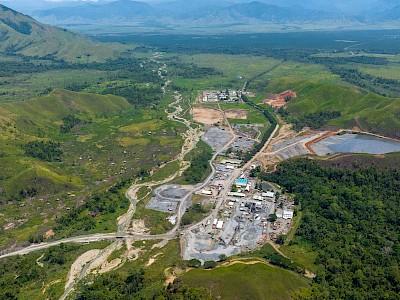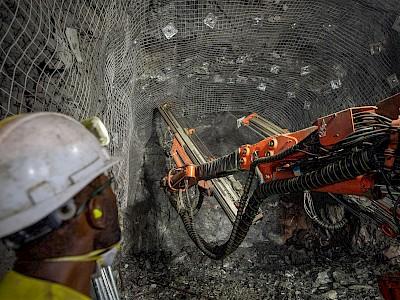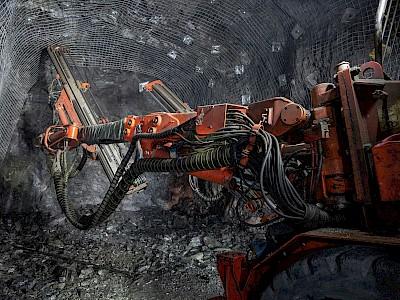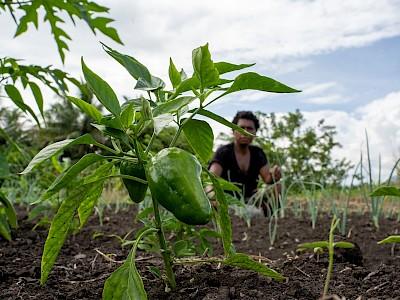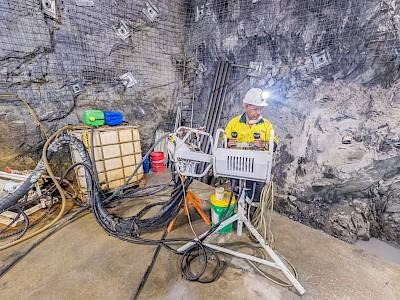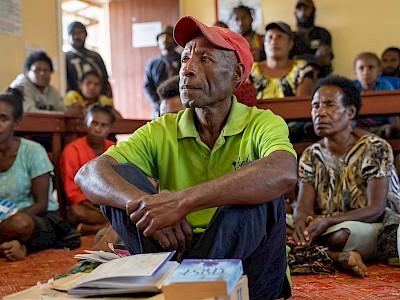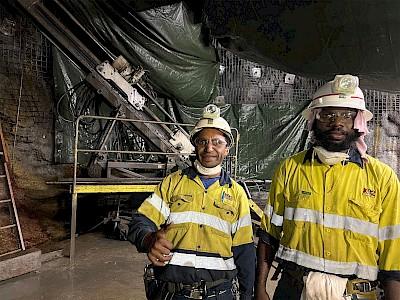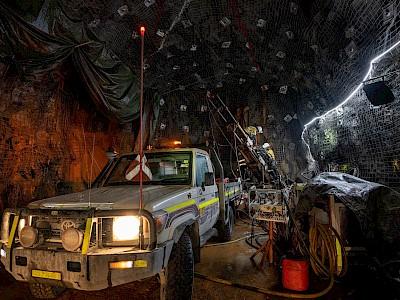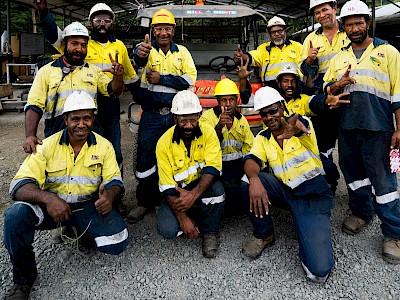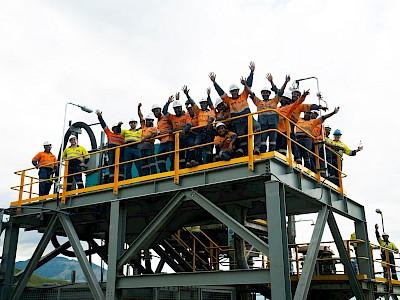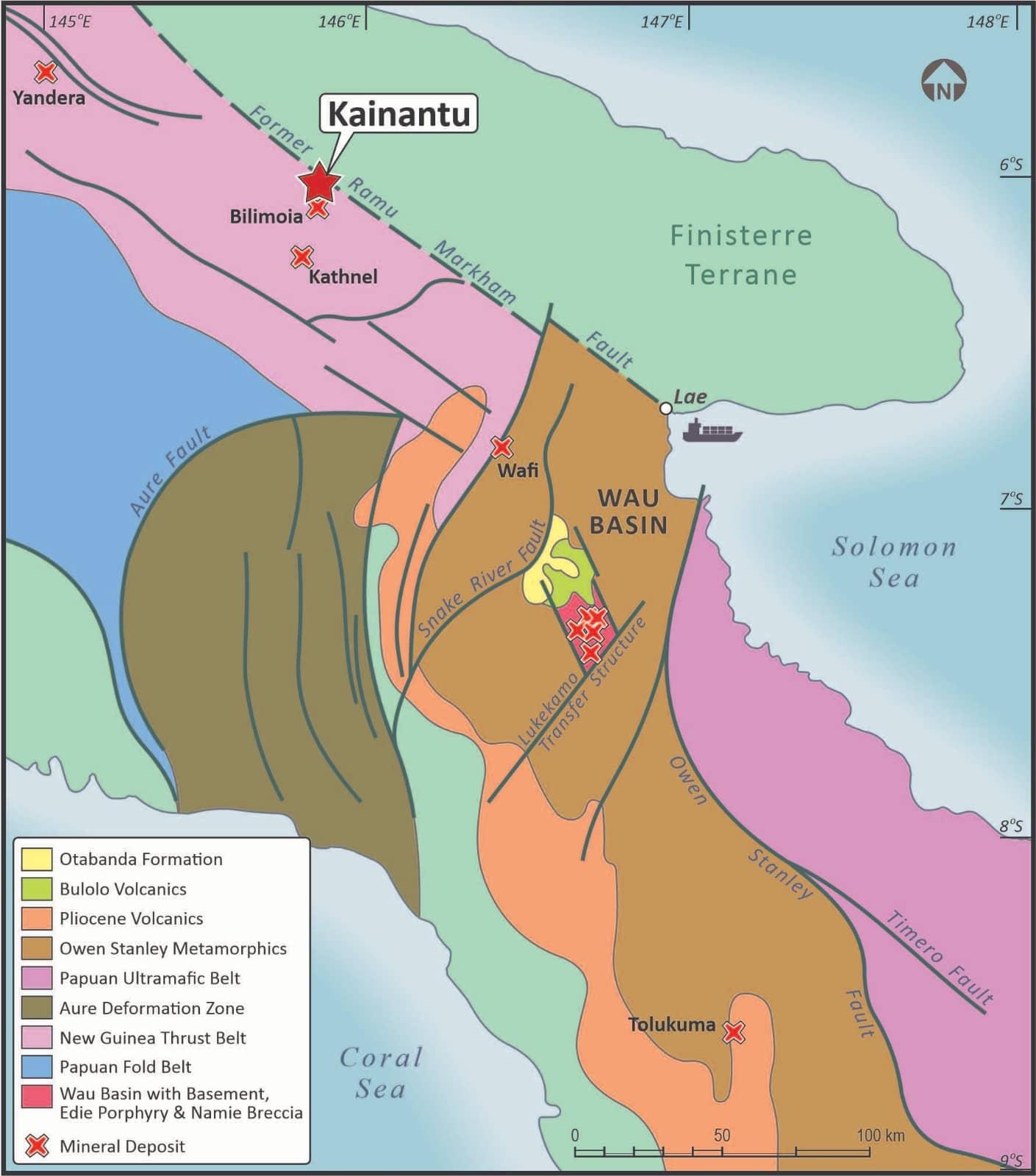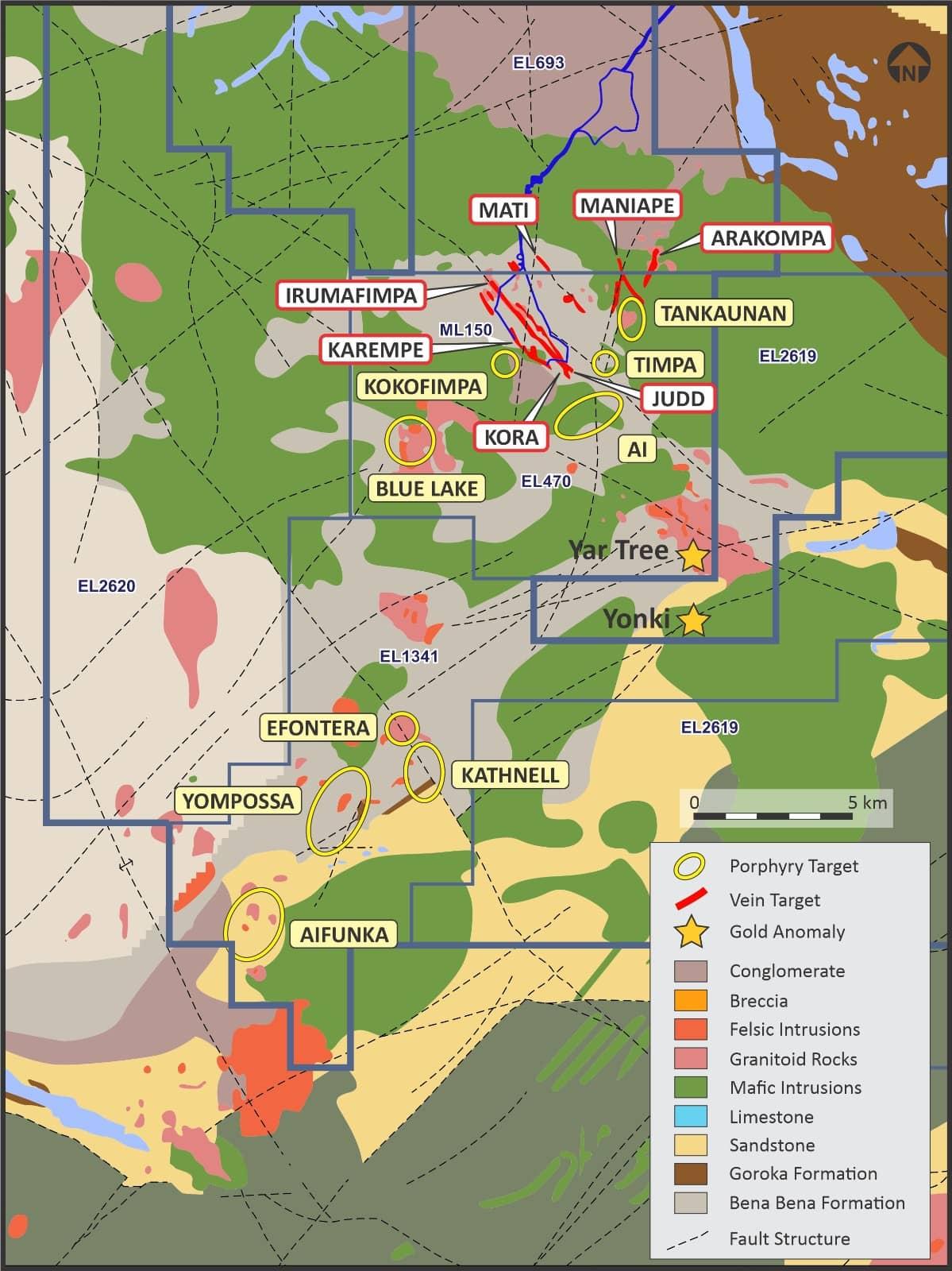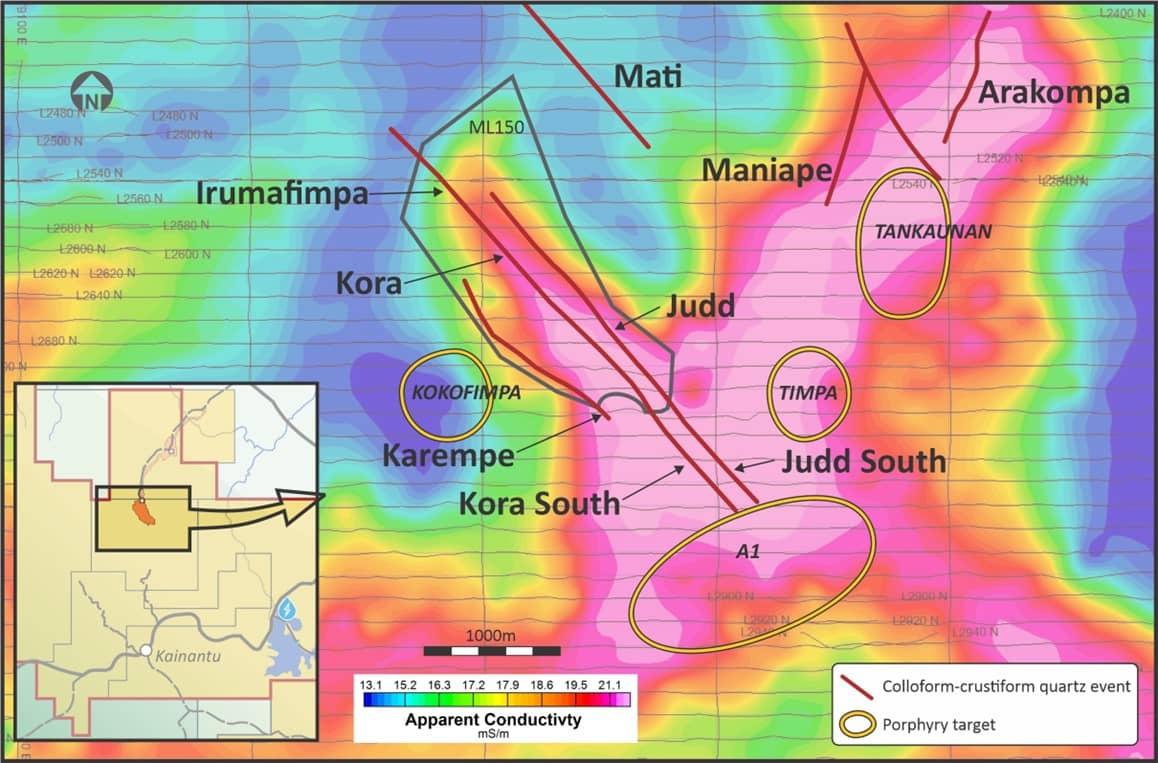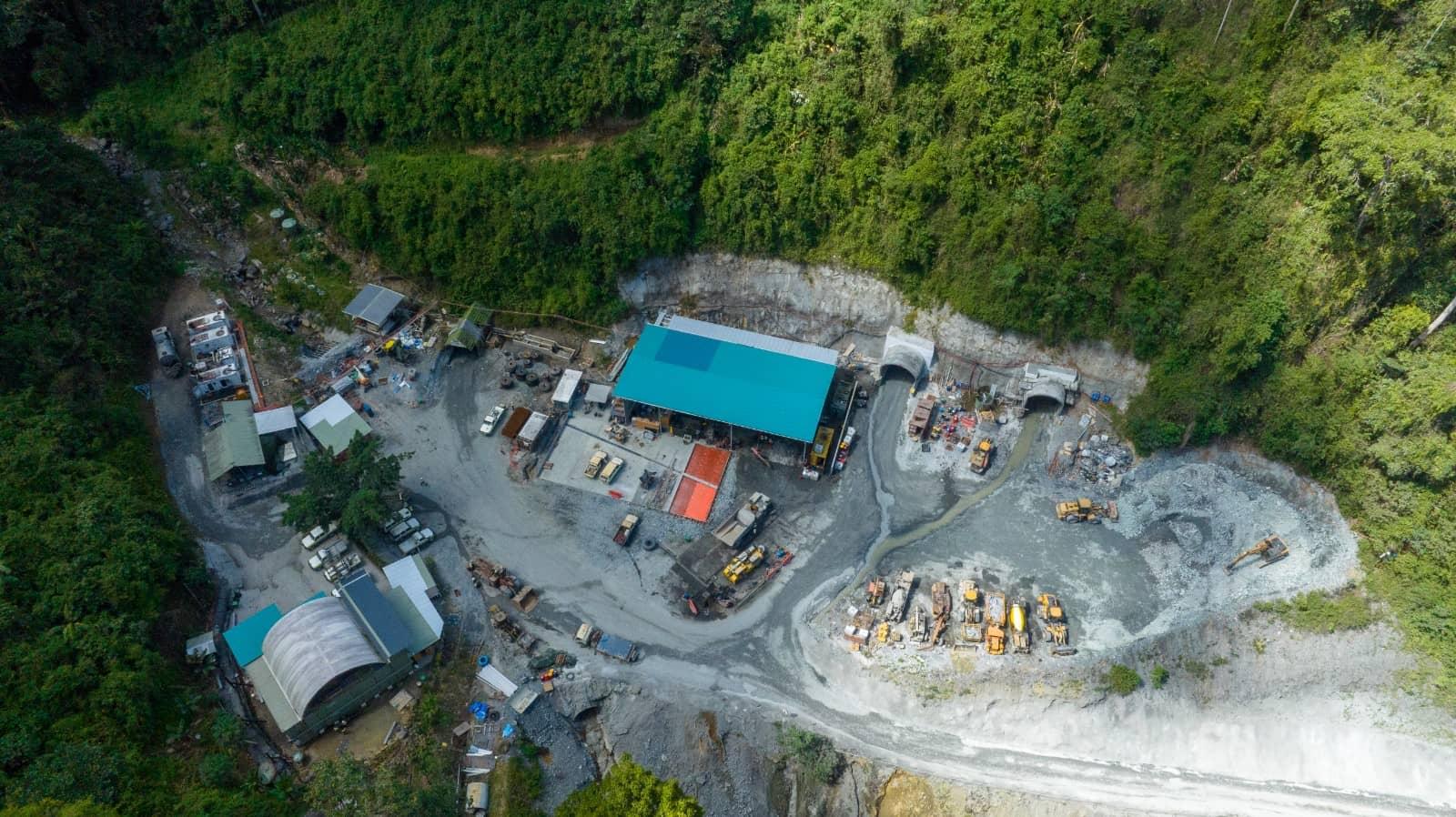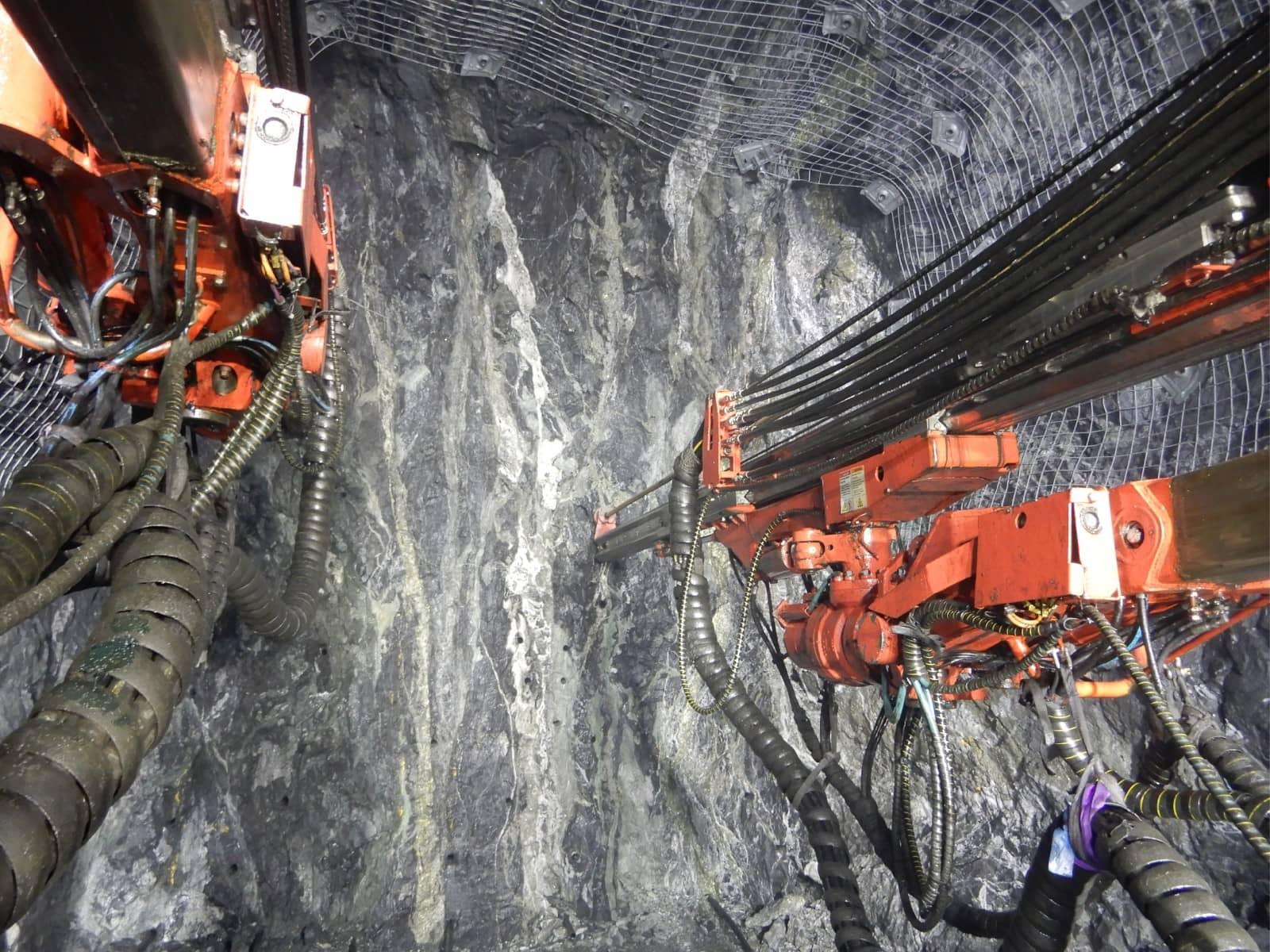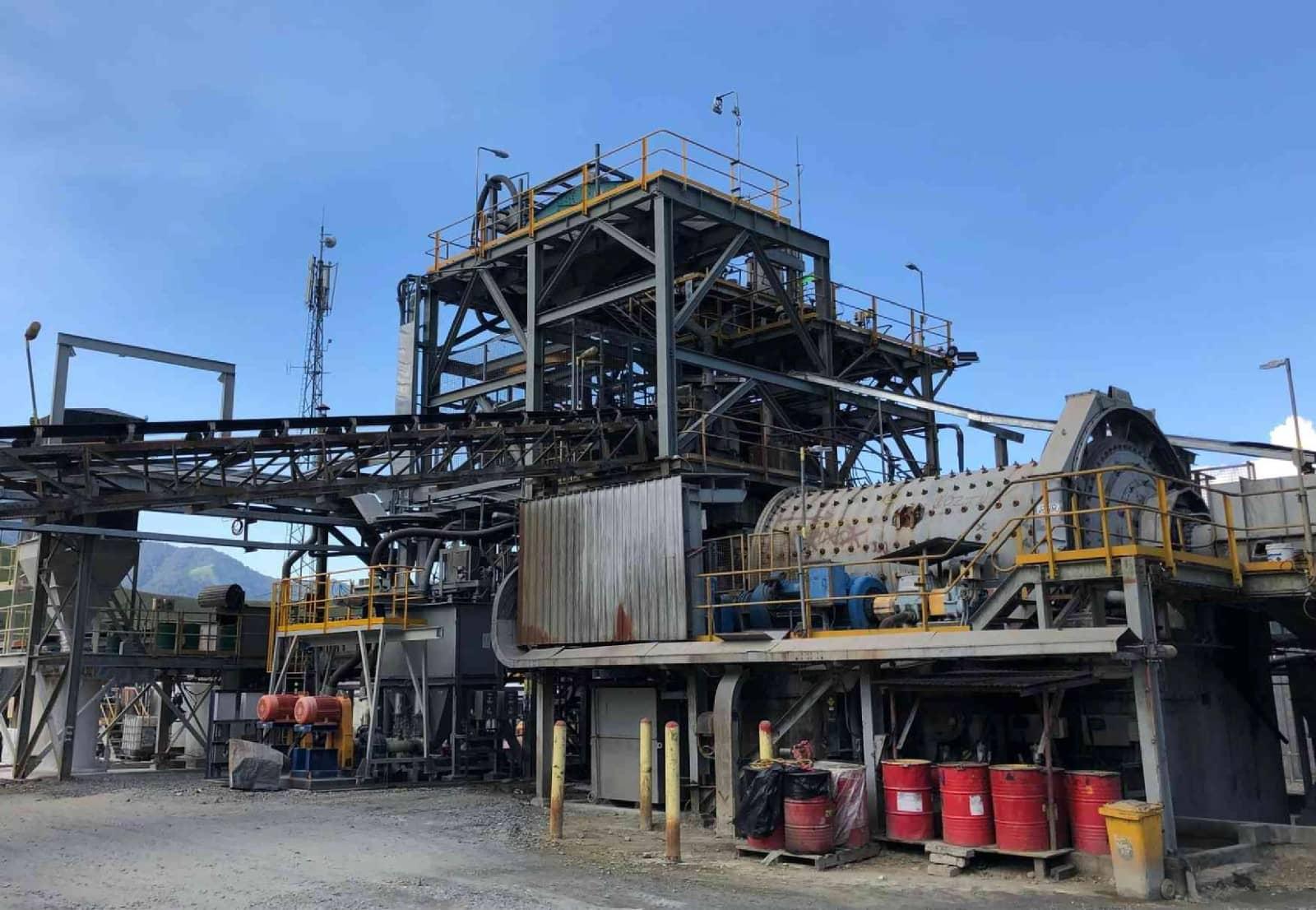Parent Aurum Gold Mining announces: The MIDAS "K"
Gold Mine:
High-Grade Gold & Copper Production
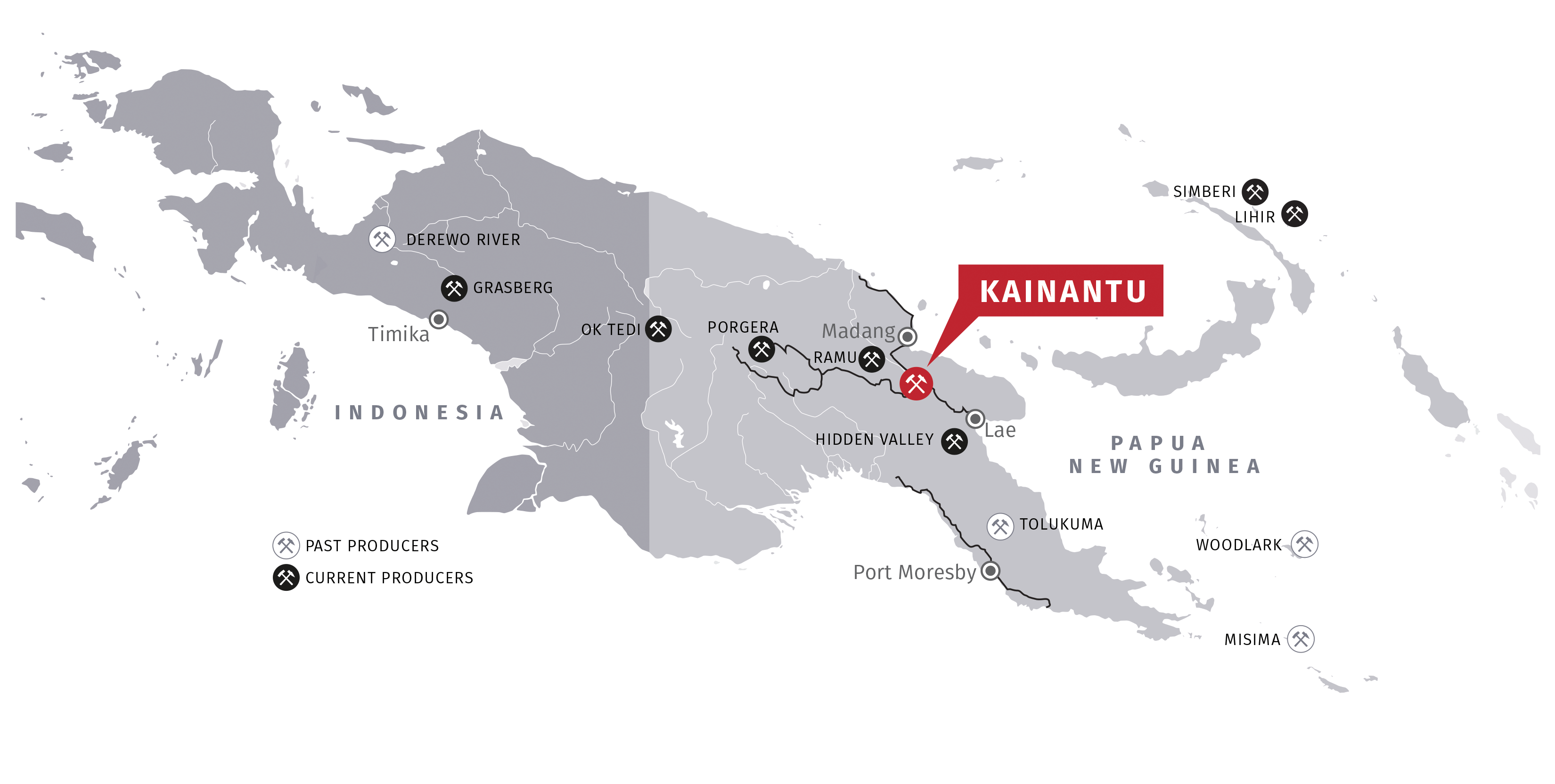
NEW GUINEA
Aurum & Midas Mining compamies are focused on operating and expanding the river alluvial mining systems, and pit mine tenement leasehold permitted area designated as the “24 K” Gold Mine, located in Eastern Highlands province, Papua New Guinea. Since acquiring the project from Tribal Clans in 2019 and restarting in late-2020, the “K” mine has transformed K area into a rapidly expanding producer of gold silver and copper mineral resources. Production has also been low cost, which is a testament to the high grade, continuity, solid thickness, geotechnical and metallurgical characteristics of the multiple vein deposit project area. The transformation was driven by a series of near-mine infrastructure exploration discoveries.
In September 2019, a near-mine infrastructure discovery at “K” north was made. This discovery ultimately combined the K main phase 1, K Valley, and K south deposits into what is now known as the K deposit. In March 2022, following extensive underground drilling focused on upgrading inferred resources to measured and indicated, Aurum and Midas announced its updated K1 Resource of 2.01 moz at 10.2 g/t AuEq (7.6 g/t Au, 17 g/t Ag, 0.91% Cu) Measured and Indicated and 2.4 moz at 9.4 g/t AuEq (7.09 g/t Au, 25 g/t Ag, 1.42% Cu) inferred.
In addition, an initial K2 Resource was announced just over a year after the discovery of high-grade underground mineralization in Q4 of 2021. The K1 main resource currently stands at 0.13 moz at 11.0 g/t AuEq (9.7 g/t Au, 18 g/t Ag, 0.7% Cu) Measured and Indicated and 0.18 moz at 5.7 g/t AuEq (4.2 g/t Au, 11 g/t Ag, 0.9% Cu) Inferred. In December 2023 Aurum and Midas Mining announced yet another resource update for the K1 and K2 deposits which was achieved over a period of less than two years and at a discovery cost of less than US$7.75 per ounce gold equivalent. The combined K1 and K2 Measured and Indicated resource increased +12%, net of depletion, to 8.11 million tonnes at 10.01 g/t AuEq (7.81 g/t Au, 21.1 g/t Ag, 1.22% Cu) for 2.59 million ounces AuEq, and the Inferred resource increased +69%, net of depletion, to 16.49 million tonnes at 8.46 g/t AuEq (5.72g/t Au, 27.1 g/t Ag, 1.51% Cu) for 4.51 million ounces AuEq.
Operations are being undertaken in multiple stages of expansion, with K1-Stage 1-2 Expansion run-rate achieved in late-2023, Stage 2A Expansion will be completed in May 2025-2026 to increase throughput by +50% to +600,000 tpa (upgraded from 500,000 tpa), K1-Stage 3 Expansion construction underway with commissioning targeting late-Q4- 2025 that is expected to increase throughput to 1.2 mtpa, and a Stage 4 Expansion scheduled for commissioning in the second half of 2028 bringing throughput to 1.8 mtpa. As outlined in the December 2024 updated Stage 3 Expansion DFS study, Stage 3 is expected to achieve Tier 1 production (+300+ koz gold equivalent per annum run-rate, $650/oz (net of by-products) or $900/oz (co-product) life of mine average all-in sustaining costs with significant upside potential. The K1-K2-Stage 4 Expansion forecasts a +400 koz gold equivalent per annum production, with both the Stage 2A and Stage 3 plants operating simultaneously.
Exploration costs are funded by Harrison Family Office, Vaquero Energy Corporation, Aurum and Midas are self-funded and remain a major focus, with up to 6 drill rigs operating across multiple targets in the Winima and Eddie Creek areas. At the K-Discovery Site, high-grade vein system, one of our highest-priority targets, up to four rigs are currently drilling the +1.7km mineralized gold-silver corridor. A new compact heli-portable rig is also scheduled to arrive in mid-2025, supporting our goal of releasing a maiden resource estimate by mid year 2025.
K1 and K2 discovery areas have a large ~200 km2 land package in the land of large Tier 1 Gold Assets. The property hosts many highly prospective vein field and porphyry targets. Multiple targets are being drill tested concurrently. Super good gold and silver production area that has proven stability and long term potential.
Note (1): Refer to the technical report titled “Independent Technical Report, “K”Gold Mine, Updated Definitive Feasibility Study, “K”Project, Papua New Guinea”, with an effective date of January 1, 2025.
AuEQ Production & Outlook
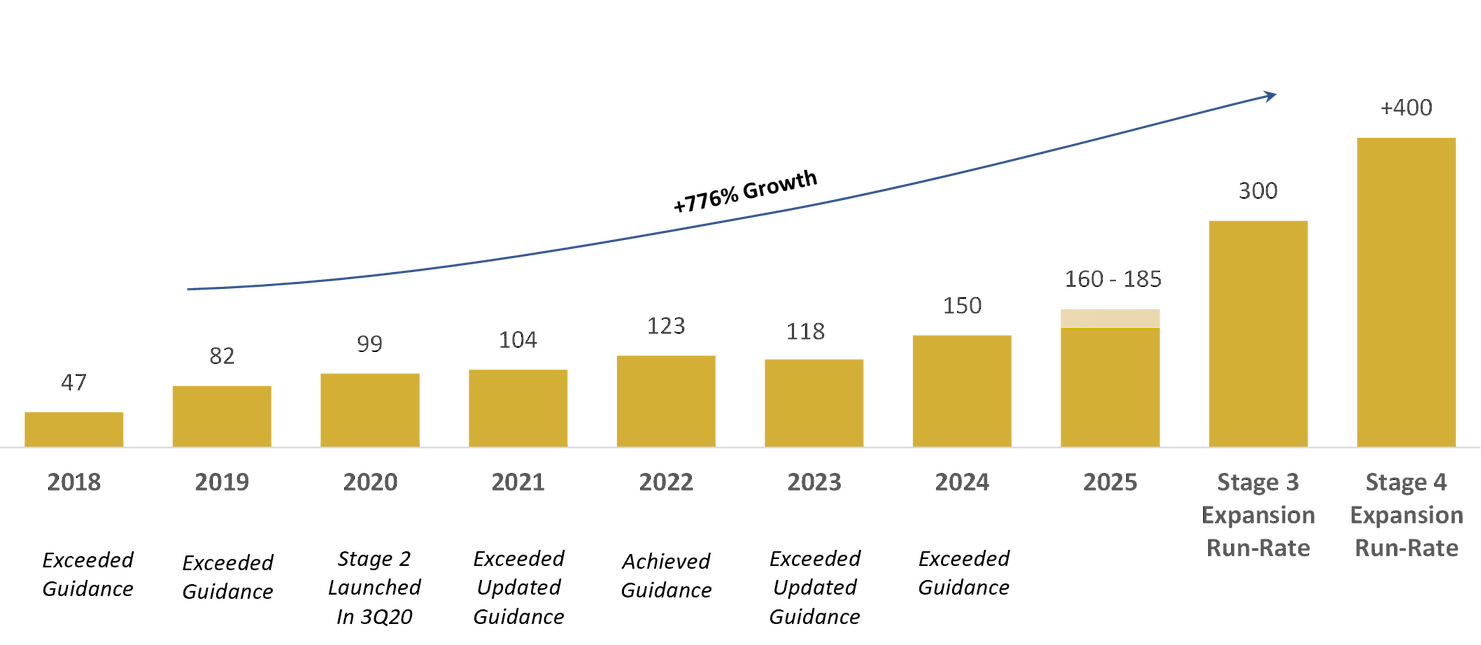
Note (1): Refer to the technical report titled “Independent Technical Report, K1-K2 Gold Mines, Updated Definitive Feasibility Study, “K”Project, Papua New Guinea”, with an effective date of January 1, 2025.
Regional Geology
The K Mine tenements, leases, contracted area properties are located within the New Guinea Thrust Belt, close to its northern contact with the Finisterre Terrane. The contact is marked by the northwest trending Ramu-Markham Fault, a major suture zone that marks the northern margin of the Australian Craton. The New Guinea Thrust Belt records an early Miocene or older ductile, tight folding event that was followed by middle Miocene intrusions. Late Miocene regional scale low-angle thrust faulting followed, associated with the collision of the Finisterre Terrane. The belt is characterized by a number of north-northeast trending fault zones that commonly host major ore deposits.
K Mine- Geology
The K Mine area is very similar to the Kainanatu area geology, underlain by greenschist to amphibolite facies metamorphic rocks of the Early Miocene Bena Bena Formation, which are unconformably overlain by the Miocene age Omaura Formation consisting of volcano-sedimentary units and limestone lenses. The overlying Yaveufa Formation comprises basaltic and andesitic flows, agglomerates, volcanoclastic sandstone and limestone. The mid-Miocene Akuna Intrusive Complex consists of multiple phases ranging from olivine gabbros, dolerites, hornblende gabbros and biotite diorites to granodiorites. Late Miocene age Elandora Porphyry intrusions and breccias are associated with mineralization and occur within proximity to a major north-northeast trending transfer structure. Mineralization on the property includes Au, Ag and Cu occurring in low sulphidation epithermal Au-telluride veins, Au-Cu-Ag sulphide veins of Intrusion Related Gold Copper (“IRGC”) affinity, less explored porphyry Cu-Au systems and alluvial gold. We do have 10 existing Alluvial River mines active in the K Mine area.
K1-K2 Vein Field
Within and surrounding Mining Lease owned and operated, (“ML ”) is an epithermal vein field consisting of multiple known and highly prospective vein systems: Kora, Irumafimpa, Karempe, Judd, Kora South, Judd South, Mati, Maniape, Winema, Kudjeru and Arakompa. Mining is focused on the “K” vein system, consisting of two dominant veins and the K2 vein system consisting of four known veins with one vein being mined. There are multiple near-mine infrastructure targets, within the discovery area, and we use the northern established Kora-Kora South, Judd-Judd South and Karempe vein systems as analogs for reserve studies.
Location & Infrastructure
The “K” Gold Mine is located in the Eastern Highlands Province of Papua New Guinea, approximately 150 km southwest of Lae and ten miles southeast of Eddie Creek. The mine is serviced by a sealed road from Lae to within 20 km of the K site, a nearby airstrip in the Eddie Creek area, but also has no grid power from the nearby Yonki Dam hydro-electric scheme, with full on-site power generation on standby. The underground mine is located on Mining Lease, (“ML ”); while the Process Plant, Offices, Workshops, Stores, Camp and Tailing Storage Facility are located on a Lease for Mining Purposes adjacent to main camp and HQ facilities (“LMP”). Power is generated by CAT Power and Mustang related power equipment.
Mining -Mechanization
The pit mining and workings are accessed via a 2,500 metre, 5 metre x 5 metre incline from a portal located at 840 mRL level. Current mining operations are focused on the “K” deposit with some production from the K2 vein system. Production from “K” is from the subparallel K1 and K2 veins, and consists of mostly long hole stoping with limited cut and fill stoping. Long hole stoping began in late Q1 2023. Mining is mechanized using twin and single boom Jumbos; 517i, 1700 and 1300 LHDs, and; 20, 30, 40 & 45 tonnes trucks. Material is and will be trucked ~3 km from the portal to the Process Plant by 20 and 30 tonne road trucks. The mining fleet is primarily CAT and Komatsu truck/earth moving equipment. All equipment is modern, and utilizes some of the latest technology.
Aurum - Processing
The Aurum Process Plant is a relatively simple design with a two-stage crush, ball mill, flotation circuit producing a combined gold-copper flotation concentrate which is shipped in 20 tonne containers from Lae to smelters in various parts of the world. The gravity circuit, which is being optimized, produces a dore product. The tailings storage facility (TSF) is a downstream design and located downstream of the process plant. At the end of 3Q20, Aurum and Midas, commissioned its Stage 2 Expansion doubling throughput to 400ktpa, followed by the Stage 2A Expansion commissioned in 2Q24 increasing throughput +25% to 500ktpa (+120koz/year).
Aurum and Midas Company Resources and Reserve Disclosures:
